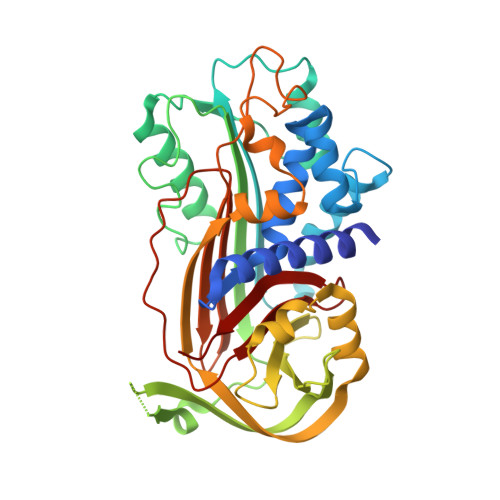Subtle structural differences between human and mouse PAI-1 reveal the basis for biochemical differences.
Dewilde, M., Van De Craen, B., Compernolle, G., Madsen, J.B., Strelkov, S., Gils, A., Declerck, P.J.(2010) J Struct Biol 171: 95-101
- PubMed: 20230900
- DOI: https://doi.org/10.1016/j.jsb.2010.03.006
- Primary Citation of Related Structures:
3LW2 - PubMed Abstract:
Plasminogen activator inhibitor-1 (PAI-1) is a serine protease inhibitor (serpin) that plays an important role in cardiovascular disorders and tumor development. The potential role of PAI-1 as a drug target has been evaluated in various animal models (e.g. mouse and rat). Sensitivity to PAI-1 inhibitory agents varied in different species. To date, absence of PAI-1 structures from species other than human hampers efforts to reveal the molecular basis for the observed species differences. Here we describe the structure of latent mouse PAI-1. Comparison with available structures of human PAI-1 reveals (1) a differential positioning of α-helix A; (2) differences in the gate region; and (3) differences in the reactive center loop position. We demonstrate that the optimal binding site of inhibitors may be dependent on the orthologs, and our results affect strategies in the rational design of a pharmacologically active PAI-1 inhibitor.
Organizational Affiliation:
Laboratory for Pharmaceutical Biology, Katholieke Universiteit Leuven, Belgium.














